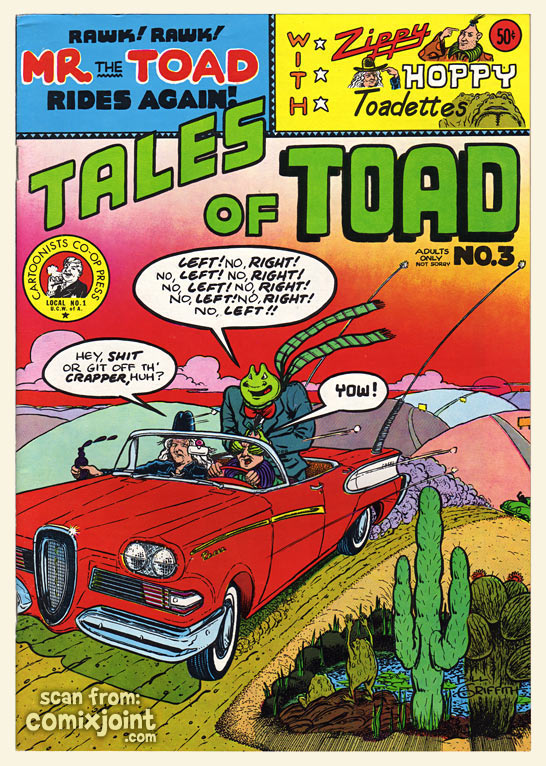Mr. The Toad

One in a series of posts dedicated to pop-culture depictions of frogs — as symbolic representations of “too-muchness — from 1904–2003.
In 1969, Bill Griffith — then 25 years old — began publishing comix about Mr. Toad (first name “The”), an angry, violent, Establishment type whose tight-fitting tweed suit was loosely inspired by Kenneth Grahame’s Toad character — in alternative publications like The East Village Other.

At the apex of the Sixties, Grahame’s Toad character is reintroduced to us in a surprising manner — as a privileged, feckless asshole. Which is actually much closer to the spirit of the original book than the Disneyfied version of Toad from this installment’s previous “leg.”
Griffith’s pop-culture frog is no laid-back flower child, quite the contrary. In fact, he is closer to what Kierkegaard called the “frog in the swamp of life” — an oblivious person who passively allows not only his actions but his perceptions and feelings to be guided and shaped by the dominant discourse of his culture. And then polices everyone else who doesn’t.
Griffith headed to San Francisco in 1970, where he gained prominence in the underground comix scene with the parodic Young Lust comic, which he then followed with other titles include Tales of Toad. Many years later, Griffith has revealed, he would realize that his father had been the inspiration for Mr. The Toad.
Griffith introduced the character Zippy in a strip titled “I Gave My Heart to a Pinhead and He Made a Fool Out of Me,” in the first issue of Real Pulp Comics (1970). Although he began as a mere comic foil for Mr. The Toad, Zippy would quickly become Griffith’s star character.
We may have here a pop-culture Freudian Trio — Mr. The Toad as bullying, uptight superego; Zippy as instinct-driven, unpredictable id; and the neurotic character “Griffy” (a stand-in for the artist) as the ego warped by its efforts to reconcile the demands of the other two.

